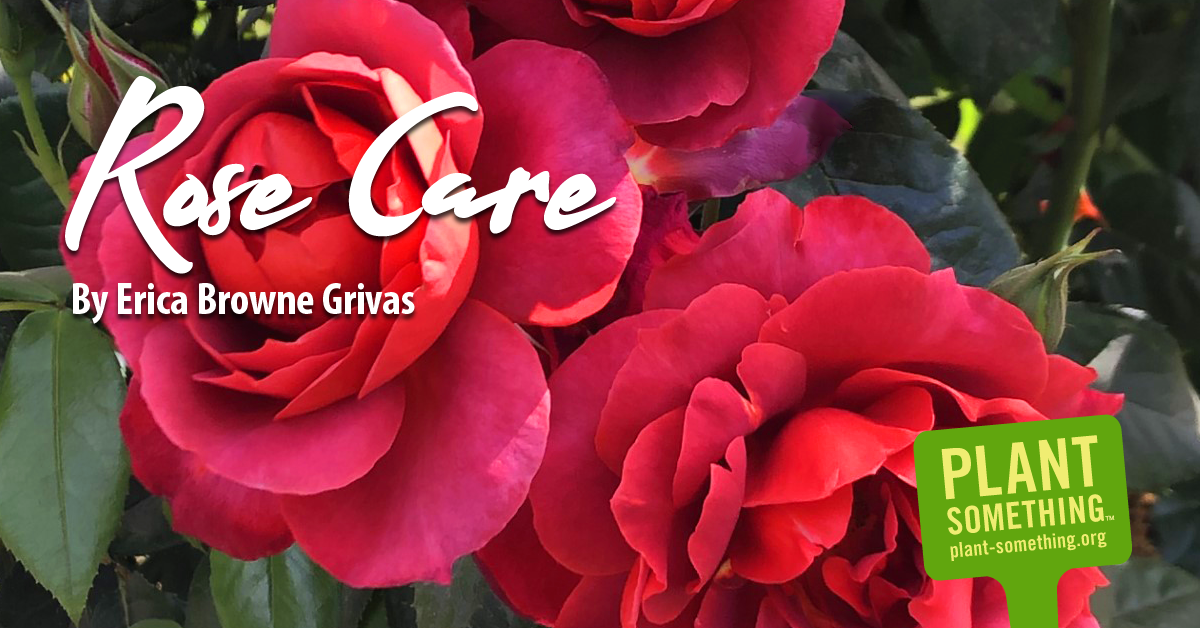Roses have been adored as a symbol of beauty and love for thousands of years. If you haven’t grown them yet, you might have heard they are fussy – a rep earned by certain hybrid tea types – but the majority are very easy to grow. Choose garden-ready varieties, and follow their simple care requirements, and you’ll be rewarded with bountiful blossoms for decades.
“They’re actually one of the easier garden plants to grow,” said Dan Estacio, president of Terra Gardens Nursery & Bark, a garden center located in Salem, Oregon. “They’ll survive both arid and wet conditions. That’s especially true of newer varieties. We see more damaged from excessive care than lack of care.”
Rachel Burlington serves as curator for the Portland’s International Test Rose Garden. “If you give a rose a little care it’s going to reward you a thousand-fold,” she said. “Even during these higher heat events last summer, who survived? The roses.”
This time of year, you’ll find roses for sale in containers, while in early spring many are available bare root. You’ll find disease-resistant varieties for groundcover, compact shrubs, standard/tree styles and climbers – most needling minimal pruning. Summer is a perfect time to visit public rose gardens to discover your favorite colors and scents before you go shopping, Estacio said.
Setting Up for Success
After selecting a spot with well-drained soil and six-to-eight hours of sun, Estacio recommends planting your rose in a very slight berm to shed excess water in winter. You can test your soil’s drainage by digging a hole and filling with water. Burlington likes to see the water drain in fifteen minutes. If it’s still there in an hour, find another spot. Leave plenty of elbow room between plants to promote air circulation for healthy leaves. Loosen any circling roots.
If your rose is grafted — look for the tell-tale knobby graft union on the base of the trunk —keep that about two inches above soil level, said Brenda Powell, co-owner of Garland Nursery, a garden center in Corvallis, Oregon. Own-root roses can be buried at the same level as their container. It’s recommended to use a root-stimulating fertilizer at planting (the middle number in the formula will be highest, such as 4-10-3). Huntington incorporates compost and then mulches with a blend of 2:1 compost/mulch.
Summer Care
For a newly planted rose, you may need to water several times a week depending on the heat and humidity, and more frequently if it is in a pot. Instead of overhead watering on the leaves, watering at ground level by hand, soaker hose, or irrigation helps discourage fungal diseases. Once established, less-frequent deep watering is best for root development, Burlington said.
During the season, Burlington applies slow-release organic rose fertilizer with a 15-10-10 every 6-8 weeks unless it is over 90 degrees, in which case she switches to liquid fish emulsion. All our experts recommend stopping fertilizing and pruning in fall to let your roses prepare for winter. If a frost hits top-heavy fresh growth, it could kill the whole plant, Powell says.
In summer, deadheading should be the only pruning needed, and some repeat-bloomers like many groundcover roses don’t even need that. But don’t’ let that stop you from making bouquets to enjoy and give all season. When harvesting or deadheading, prune to above an outward-facing five-leaflet leaf. “We know that should be strong enough to support another bloom,” Burlington said.
Troubleshooting
If you see black spots on your leaves, remove and dispose of affected leaves on the plant and ground to prevent blackspot fungus from spreading and overwintering.
Aphids are small, soft-bodied sucking insects that cluster on stems and buds. They can be hosed down or treated with repeated insecticidal soap early morning or at dusk to avoid affecting pollinators. If you buy and release ladybugs, Powell suggests releasing at dusk and spraying the ground with water to encourage them to stick around. Squishing an aphid may attract ladybugs eventually, too.
If powdery mildew strikes, don’t worry – it is more unattractive that it is dangerous. Powell said she has found the new biofungicides, rated for organic use, helpful.
Getting Ready for Winter
It’s September. You’ve slowed the watering and stopped the pruning, so you may be enjoying some rose hips on the bushes. Clean up fallen leaves and add a light mulch. Do you need to prune now? Only if you have a very top-heavy plant over four feet tall that could snap in a storm – then trim by about one-third, Powell says. Leave the rest of your pruning until February.
Patio or container roses will be more vulnerable to winter winds than those in-ground, so consider pulling up against a warm house wall, or wrapping with frost cloth in severe weather.
“Roses are super forgiving,” Powell said. “Gardeners don’t have to stress a ton about being right or wrong. My grandson ran over the same rose twice and it looks beautiful today.”
With their tough-as-nails constitutions, often intense fragrance and bountiful blooms in nearly every color, is it any wonder we still love with roses after all these years?


